Building backlinks isn’t easy, all the more so when you are trying to do it all by yourself. According to a study by Ahrefs, the more backlinks a page has, the more search traffic it gets from Google. So, if you want your website to remain competitive in the search engine results pages (SERPs), you need to pay attention to developing your backlink profile. Link building tools can help you to overcome the challenges associated with acquiring backlinks.
Now, you probably already know how taxing ‘manual’ link building is. You may have to spend hours looking for ‘link-able’ sites and content ideas and then several more hours reaching out to webmasters. And imagine how much time that adds up to when you are doing it all alone. Not efficient, right?
However, the good news is there are some AMAZING link building tools out there that can help you to build more and better backlinks. By using these link building tools, you will be able to focus on the more important aspects of the search engine optimization (SEO) of your website, such as the quality of your content - one of the most important signals used by Google to rank your website, according to Andrey Lipattsev, Search Quality Senior Strategist at Google.
This article will walk you through the 10 best link building tools for building a greater number of quality backlinks; in other words, white-hat links that Google will give you brownie points for.
There are 4 main types:
We will discuss all 4 types in this article. Without further ado, let’s dive in!
The first one up on our list is BacklinkSEO. This tool is perfect for the entire process of link building.
Although BacklinkSEO is a new player in the arena for link-building tools, it has garnered all positive reviews and has been hailed to have competitive features that have the potential to be at par with that of industry leaders.

The pricing ranges from $10 to $99, and there are 4 plans that you can choose from depending on your requirements:
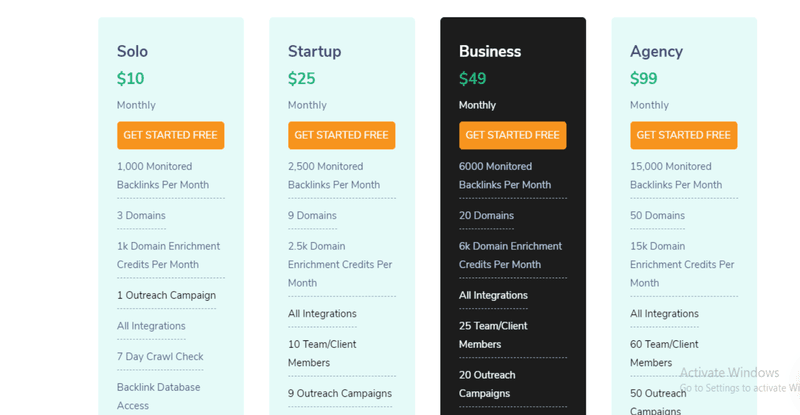
Ahrefs is dubbed as the world’s largest backlink index in the digital marketing community. It gives you a very comprehensive list of backlinks to any website, resulting in improved identification of link building opportunities.
Although it has several tools for the overall SEO management of websites, we will give you an overview of the tools best suited for link prospecting and link analysis: Site Explorer, Link Analysis Tool, and Batch Analysis Tool.

This tool helps you to find link-building opportunities by analyzing your competitors’ site and their backlink profile. It has several other features, but we’ll discuss the ones that are related to link building. Using this tool, you can:
These features enable you to keep an eye on your competitor’s best-performing content so that you can uncover what’s working for them (as well as what isn’t) and replicate that for your own website. What’s more, you can examine what sort of public relations (PR) attention your competitors are getting so that you can reach out to the right journalists and media outlets.
Ahrefs’ Link Intersect tool gives you the chance to identify pages that are linking to your competitors but not to you.
If these websites are already linking to your competitors there’s no good reason as to why they shouldn’t link to your website as well, right? By chasing up these prospects, you can bag some relatively easy backlinks. This tool is especially helpful for finding opportunities to get featured in industry round-up posts.
This falls under the category of link analysis tools.
Once you have a list of all your link building opportunities, how do you decide which ones to prioritize? But having to do that manually for each domain would take such a long time! This is where the Batch Analysis Tool comes in.
This tool enables you to pull up Ahrefs’ SEO metrics for up to 200 websites or web pages all at once. You’ll have access to important metrics such as domain rating, URL rating, approximate organic traffic, the estimated number of keywords for which the site ranks.
If you manage to get a backlink from a site that fares well on all three of the above metrics through, for instance, a successful guest post pitch, your content is likely to garner more eyeballs. Besides, it’s no secret that a backlink from an authoritative site can better help you to climb up the SERPs than a backlink from a less authoritative site.
You can sort the results by estimated traffic and domain authority to get an idea of which prospects you should focus on first. Once you’re done, you can export your consolidated list with one-click for easy reference.
Okay, so here comes the slightly inflexible part with using Ahrefs’ solely for the purpose of link building.
There are both free and paid options available. Only Site Explorer and SIte Audit are offered for free as a package. The rest of the tools are all paid for and can’t be purchased in isolation from one another.
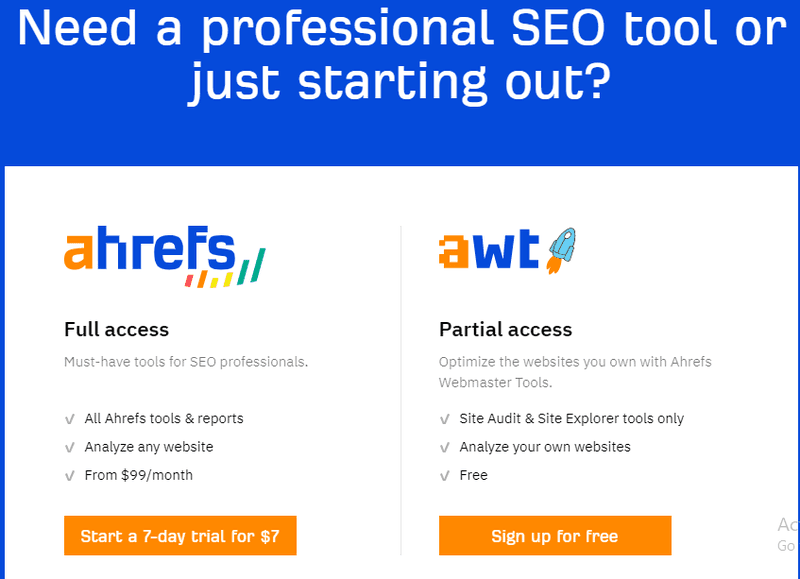
If you want to use the aforementioned tools for link building, you will have to purchase the entire package of SEO management tools that Ahrefs’ offers.
You can also opt for a 7-day free trial priced at $7.
Here’s what the full set of pricing plans looks like:
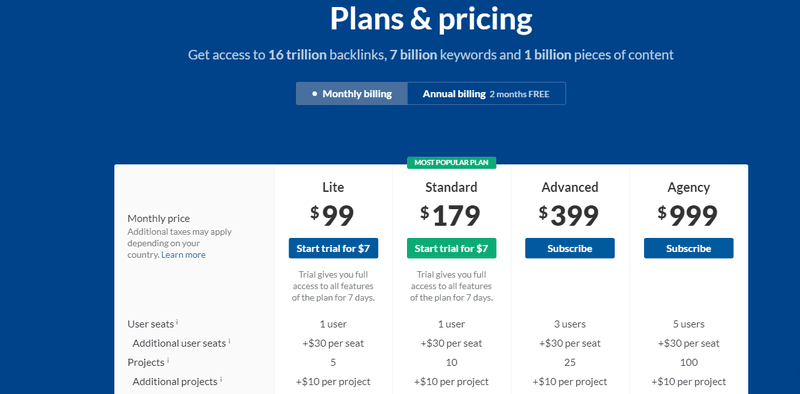
The next tool on our list is great for link prospecting and analysis.
Once upon a time, Google ScrapeBox was used for black-hat link building through, for instance, mass blog commenting. However, while black-hat link building techniques have become obsolete today, novel uses of this nifty tool have emerged. And these new ways are some excellent ways to build white-hat links.

ScrapeBox is basically a tool that helps you to filter search results from all search engines combined; it gives you the most “polished” search results for your search queries.
However, for best results, you need to tweak the structure of your search queries by using Google’s advanced search operators. These operators help you to narrow down your search results so that your search intent is satisfied.
Here are some examples:
There are tons of advanced search operators that you can combine together to find link building opportunities. From finding websites that are accepting guest posts and infographics to finding resource-based pages on your niche, these advanced operators have widespread reach.
Once you’re done researching your link building opportunities, the next step is to “extract” these results from Google and analyze their SEO metrics.
For executing this next step effectively, it is best if you use “proxies”. According to Varonis, a proxy server acts as a gateway between you and the internet. It’s an intermediary server separating end users from the websites they browse. In other words, proxies enable you to make numerous requests to carry out certain activities such as scraping Google search results at scale.
The catch here is that these proxies need to be bought and proxies can be expensive. The price per proxy starts at $1.49.
You can start using ScrapeBox with a one-time payment of $97. This comes with free proxies, but the best ones are the paid ones.
Linkody is a fantastic tool for link prospecting and link management without being too heavy on your pockets.
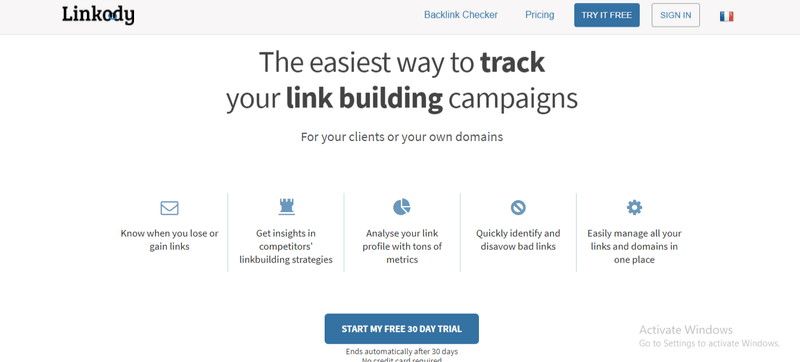
Linkody is one of the most budget-friendly link building tools in the industry with decent features. It may not be as good as the big ones, such as Ahrefs’, yet it works pretty well, especially for beginners.
The pricing ranges from $14 to $153 per month. The plans are segregated according to the number of domains, monitored links, and users. A free trial of 30 days is also offered.

Here’s a link outreach tool if you’re bored of reading about the other types of link building tools.
BuzzStream is an end-to-end outreach platform that helps you to stay organized with your email outreach and link building results.
In other words, it enables you to manage your outreach process all in one place. You can keep track of conversations and organize campaigns easily across multiple projects. And the part is, you can send customized emails to each prospect, according to the status of your relationship with them. More on this in a bit.
Therefore, if you work in teams or have a large team, this tool comes in really handy.

And here’s how the outreach process works on BuzzStream:
You may start by using the “Discovery” option if you don’t have a list of target websites already. Alternatively, you can upload the list of your target websites.
BuzzStream will then find the contact information of these websites using the Buzzmarker Chrome extension. Just input the information as required.
To reach out to prospects from BuzzStream itself, connect your email to BuzzStream.
Initiate the outreach process. You can send in personalized mass emails using the “Custom Fields” feature on BuzzStream, as we mentioned earlier.
This feature enables you to choose your “Relationship Stage” with the prospect. You can create templates curated for each stage and then choose the stage accordingly when you are emailing prospects.
For example, here are the stages used by Brian Dean, founder of Backlinko:
You can also add “data points” to custom fields. These can be SEO metrics, such as domain authority or even information about whether they’ve linked to your competitors. In a nutshell, depending on the type and purpose of outreach, e.g guest posting, you can add items to custom fields to personalize your outreach process.
The pricing ranges from $24 to $999 per month, depending on the plan you choose. The plans are divided according to the number of users, and features. A free trial is also available.
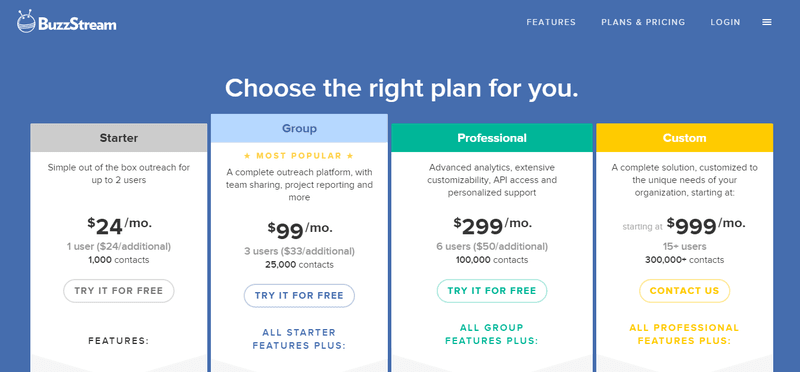
Here’s a link outreach tool that comes with a pop of color and a great user interface.
JustReachOut is slightly different from traditional outreach tools because it involves the use of public relations to build links. In other words, it enables you to reach out to reporters, journalists, and press outlets, in addition to bloggers.

PR is hailed as one of the best link building methods out there. It is a great way to earn powerful links from highly reputable sources, such as HuffPost, Wired, and Forbes.
JustReachOut boasts quite a comprehensive database of journalists, so there’ a good chance you’ll find at least a couple of media people within your niche.
The pricing ranges from $159 to $559, depending on whether you choose “Simple”, “Advanced”, or “Guided” outreach. Each plan comes with a range of features.
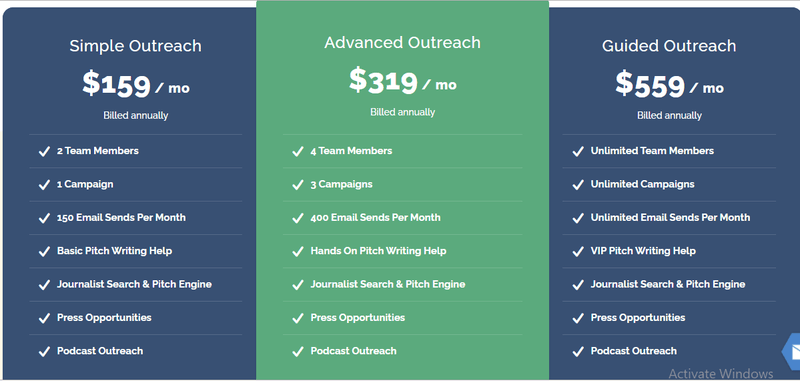
Moz Link Explorer is another great link prospecting and link analysis tool that enables you to check the backlink profile and domain authority of any site. You can also use it for the backlink management of your own website.
In 2018, Moz announced that it is replacing its Open Site Explorer Tool with Link Explorer. This came with several additional features that were absent in Open Site Explorer.
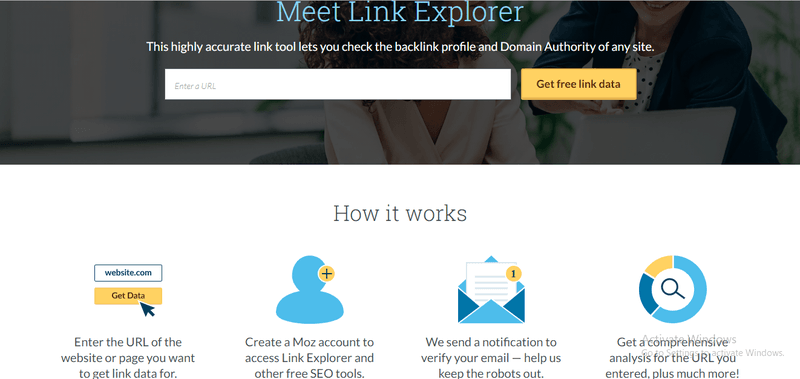
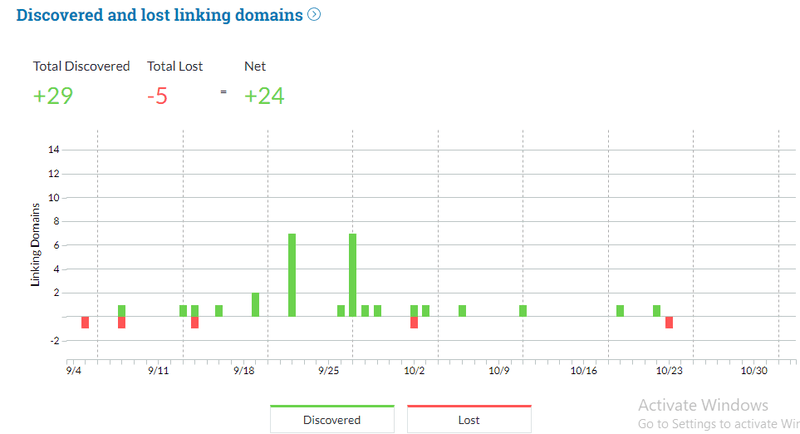
Link Explorer is available for free; It is among the free SEO tools offered by Moz. However, not all features of Link Explorer are available in the free version. The Pro version includes other SEO tools as well, and costs around to $99 to $599. A 30-day free trial is also available.
Monitor Backlinks can be used as both a link prospecting and link management tool.
Although, as the name suggests, its main focus is on backlinks, Monitor Backlinks has a couple of other features, such as keyword rank tracking and SERP position tracking.
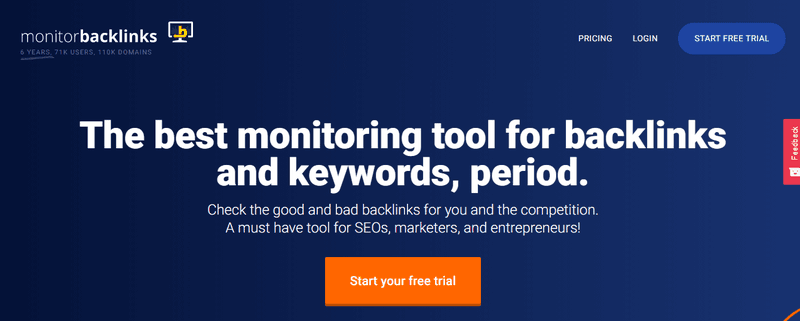
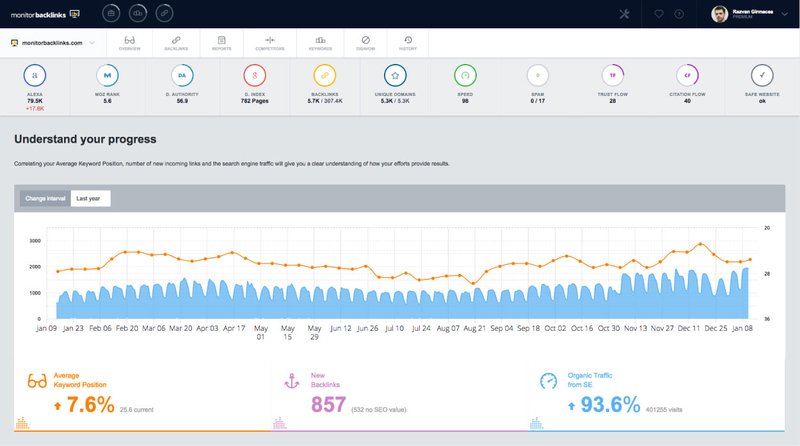
The pricing ranges from $25 to $249 depending on the type of plan you choose. You also have the option to customize your plan by varying the number of monitored domains, links, keywords, daily rows, etc. A free trial is available.
SEMrush offers a complete SEO toolset similar to Ahrefs’. Its range of features includes social media management, keyword research, content marketing, Local SEO, and of course, link building. SEMrush can be used for practically all aspects of link building.

There are two plans that you can choose from: Pro and Guru. Pro costs $99.50 per month while the latter costs $199.95 per month. Both of these plans comprise the complete SEO toolset with some variations. In other words, you can’t choose to use just the link building features. This can be a little inflexible for some users.
A 7-day free trial is available before you choose to commit to either plan.
Majestic is an SEO tool wholly focused on link-building. However, its features center around link prospecting, link analysis, and link management.
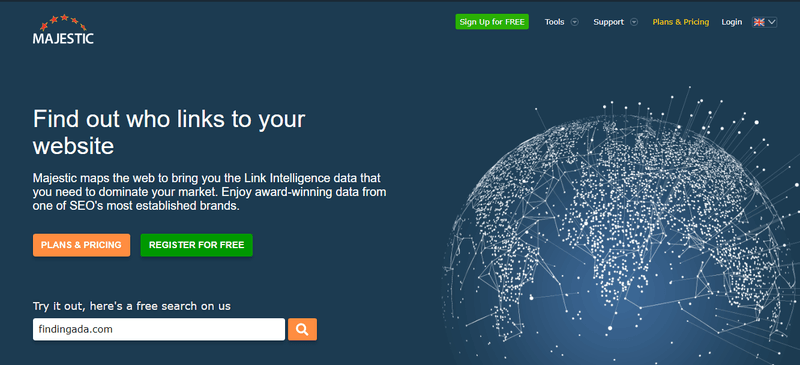
There are a lot of other nifty features available according to the plan you choose. In a nutshell, Majestic offers a complete breakdown of link profiles for link prospecting, link analysis, and link management. However, it has been criticized for having an antiquated UX design, which may hamper your user experience to an extent.
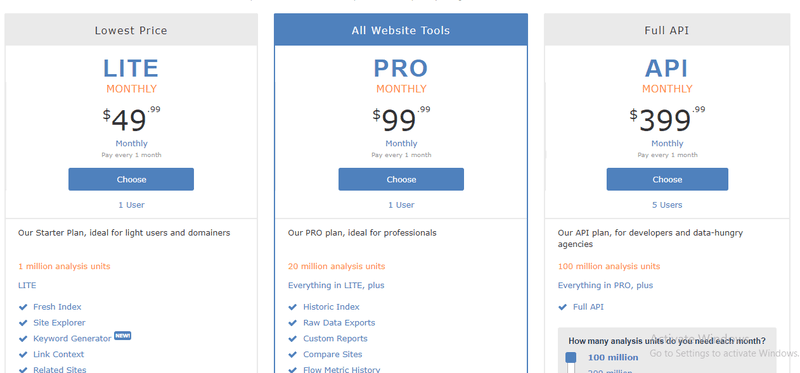
The pricing ranges from $49 to $399, as you can see above. Again, each plan comes with its own set of features.
There’s no doubt about the fact that using link building tools can make the process much easier so that you can shift your focus to the other essential aspects of your website. That said, choosing the right link building tool is also important. Here are a few factors that you can take into account when selecting one (or more!) for your website:
Again, these are some crude factors that you would want to take into account. There may be other specific factors related to the nature of your website/business that you should consider when choosing a link building tool.
What do you think about the tools we discussed above? Let us know! And as always, reach out to us if you have any further queries.